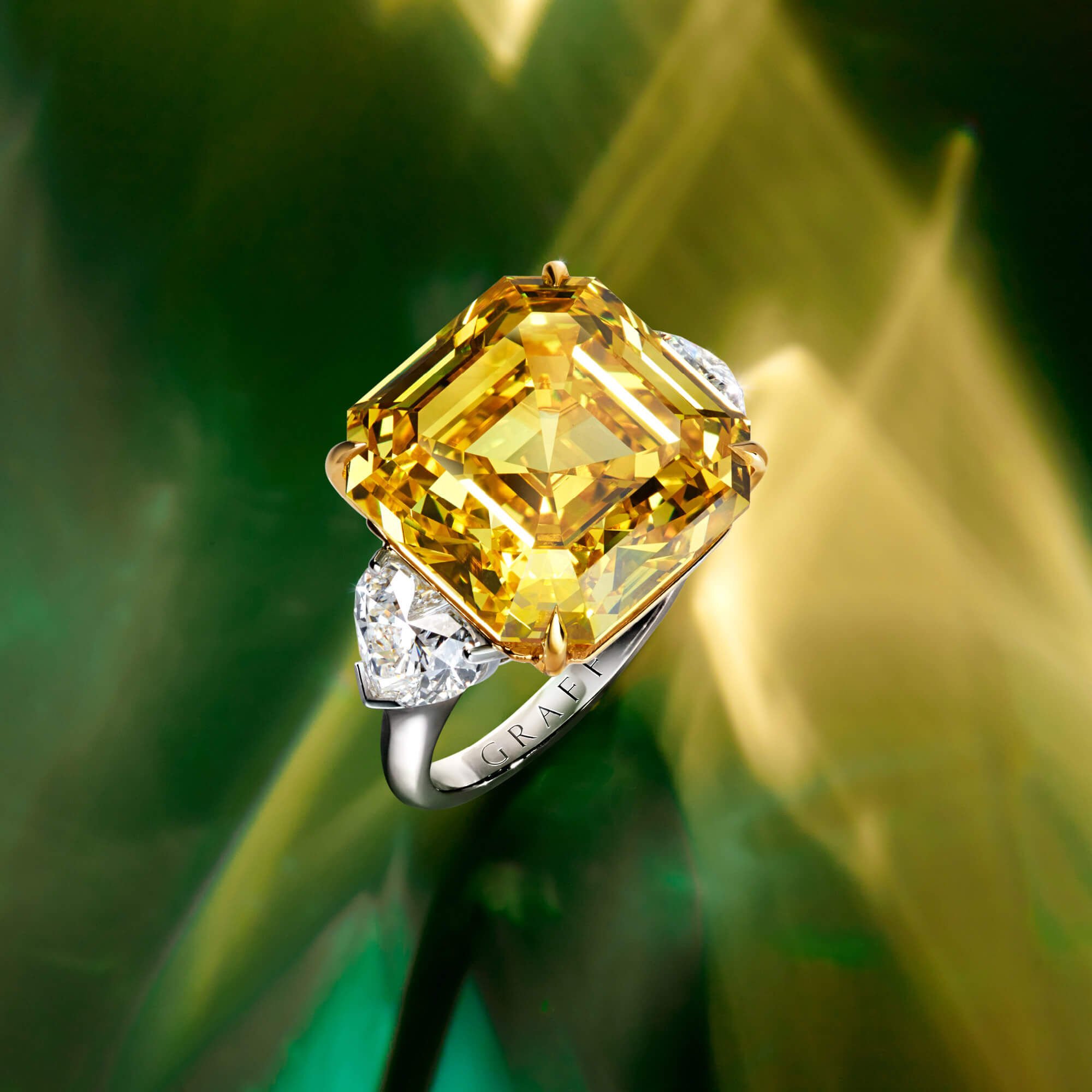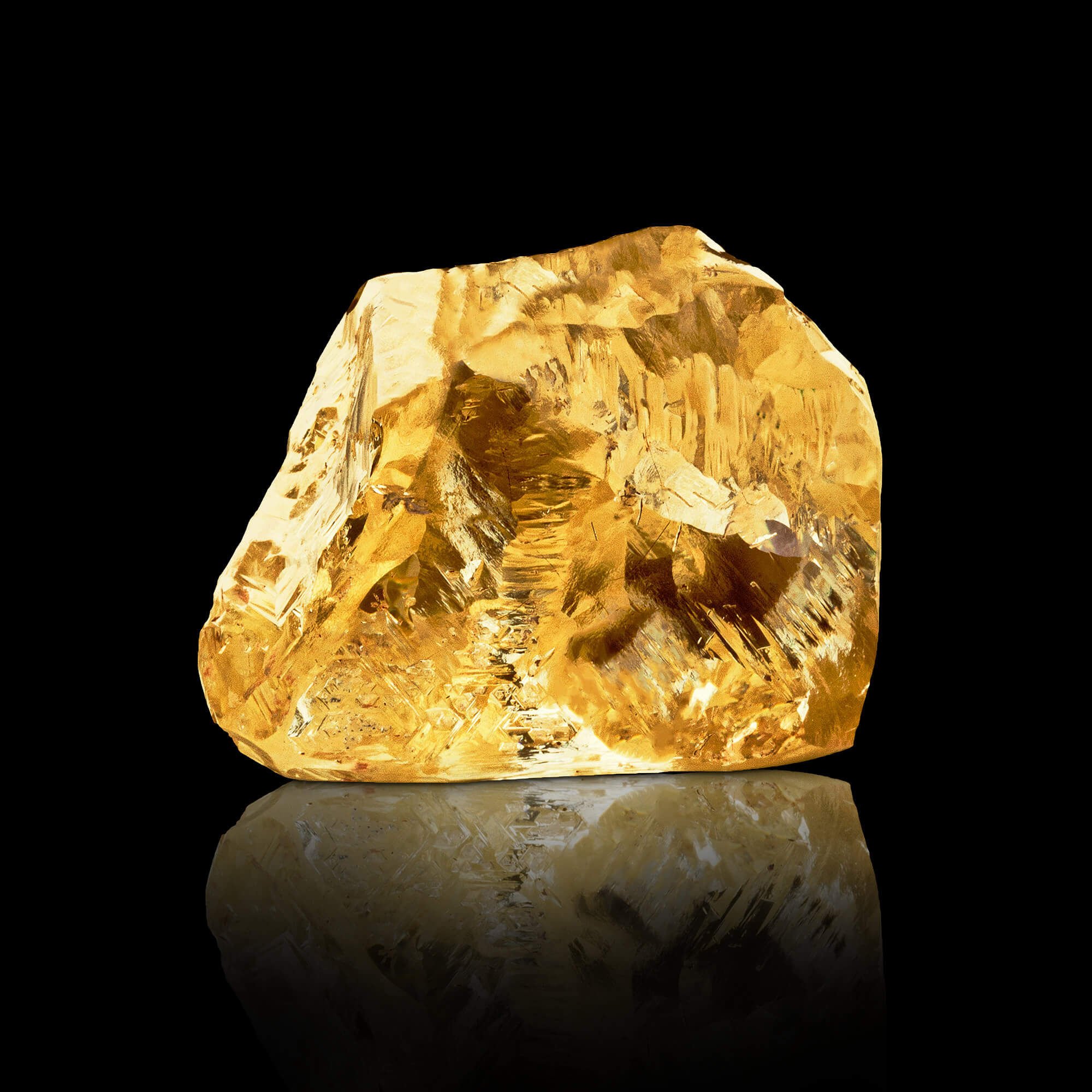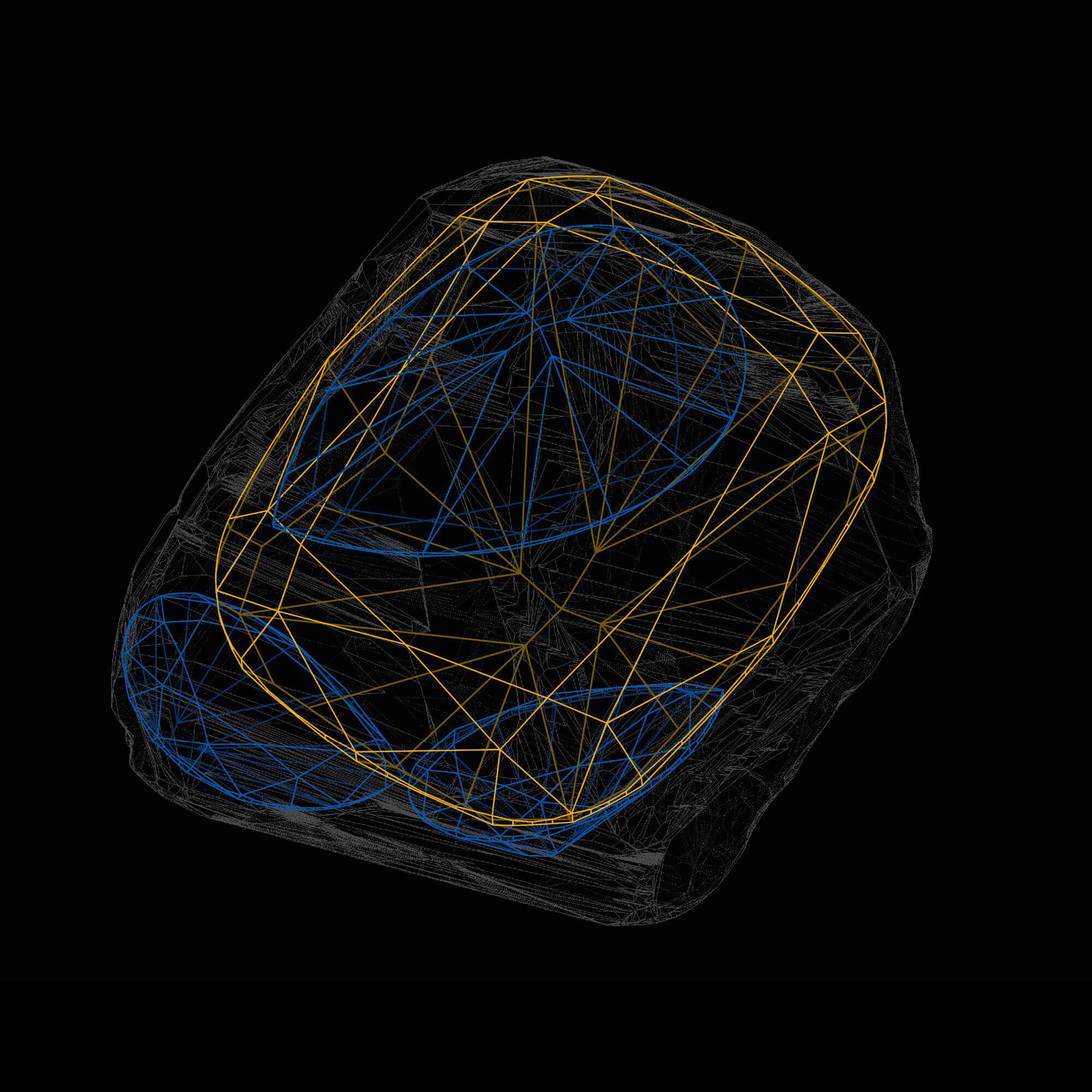Chasing The Light
The Graff name is synonymous with the world’s finest yellow diamonds. With insight from three industry experts, Maria Dulton uncovers their extraordinary journey from rare rough stones to polished beauty.
If any stone can capture joy, the yellow diamond wins hands down. On the drabbest of days, the golden light from a perfect yellow radiates wellbeing like the warmth of a hazy summer afternoon. Could a yellow diamond be a contradiction of world order, a shard of sunlight captured forever in a virtually indestructible mineral born in the mysterious depths of our planet?
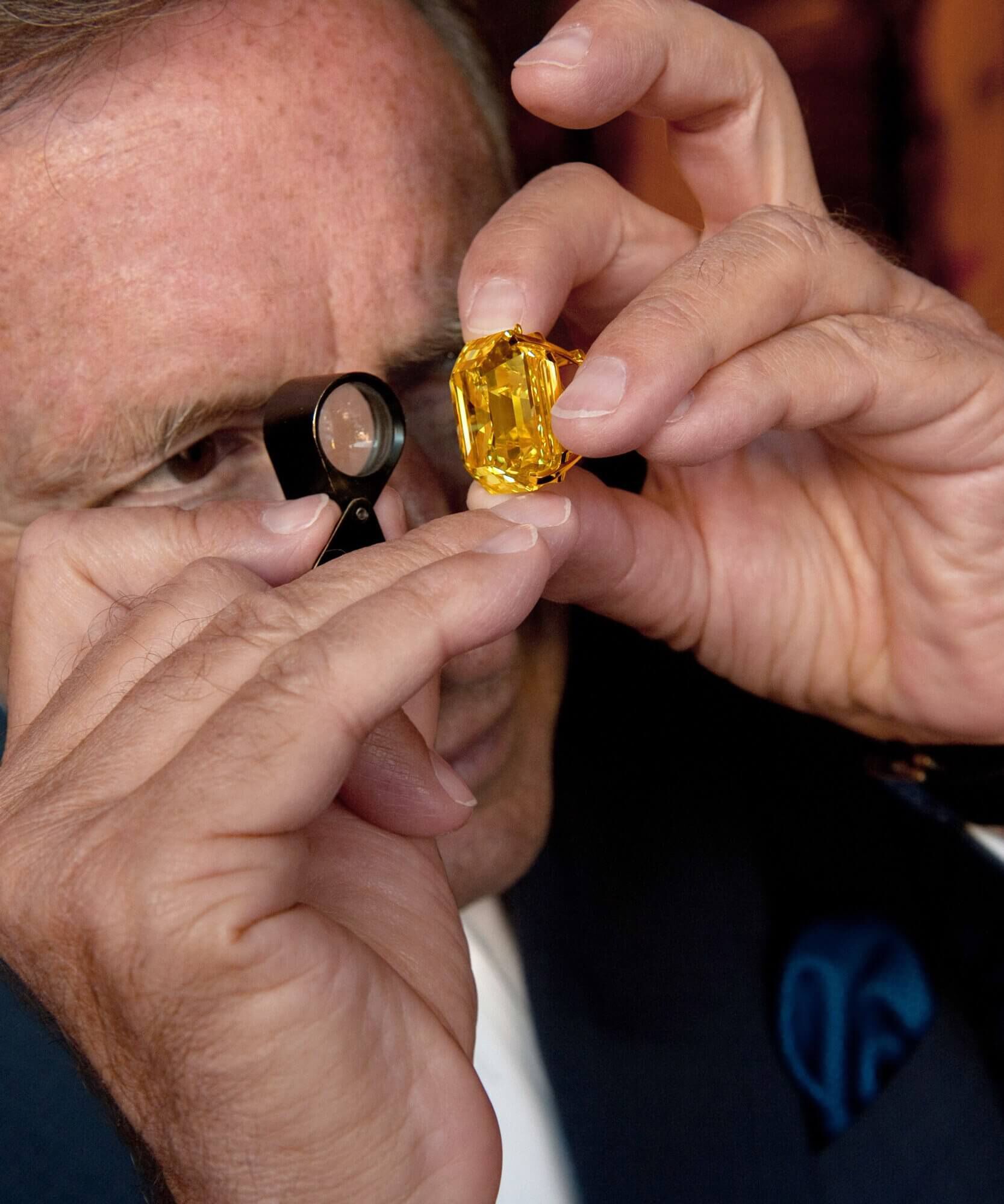
Science tells us otherwise, and it is nitrogen, the rather less romantic element, that billions of years ago differentiated a colourless diamond from its daffodil-bright sibling.
The yellow is the only coloured diamond whose grading begins on the lower end of the GIA D-Z grading scale and continues into the ‘Fancy’ hues, giving yellows the widest and most fascinating range of variants.
The most prized are the four Fancy grades, from Fancy Light to top-of-the-range Fancy Vivid, with its perfect equilibrium of colour and saturation.
Until the discovery of diamonds in South Africa in the second half of the 19th century, few yellow diamonds had been found. Those from existing sources in India and Brazil were considered natural wonders worthy of curiosity cabinets and royal collections.
But today, yellow diamonds are one of the most sought-after gems, and that is in no small part thanks to four decades of work by Laurence Graff, who was one of the first to shine the spotlight on Fancy yellow diamonds at a time when only white would do.
Laurence Graff recalls the moment in New York, in the 1970s, when a diamond cutter showed him a 31 carat yellow diamond. He was taken aback by how the radiant cut maximised its colour. Following his heart, he bought the stone, and from that moment on it could be said he had contracted an enduring case of yellow fever.
It wasn’t long before he acquired and recut his first headline-grabbing yellow, the 47.39 carat Star of Bombay, followed since by almost two dozen more outstanding yellow diamonds that are among the finest of their kind in the world.
“Today, yellow diamonds are one of the most sought-after gems, and that is in no small part thanks to four decades of work by Laurence Graff.”
Ever the innovator, ground-breaking techniques were developed by Graff to find new cuts that would best enhance the colour of a diamond. Today, discerning connoisseurs know that if they are looking for an exquisite yellow diamond, they will find it in Graff’s peerless collection.
At 118.08 carats, the Delaire Sunrise remains one of the most famous stones cut by Graff and the largest Fancy Vivid Yellow square emerald cut diamond in the world.
Beyond the perfect Fancy Vivid there is a growing interest in more unusual hues, from Brownish Yellow to Fancy Deep Orange Yellow. But, whichever you choose, the sun will never set on a yellow diamond’s ability to spread its brilliant and joyful glow.
ALAN HART
— The Scientist —
Gemmologist and CEO of GEM-A
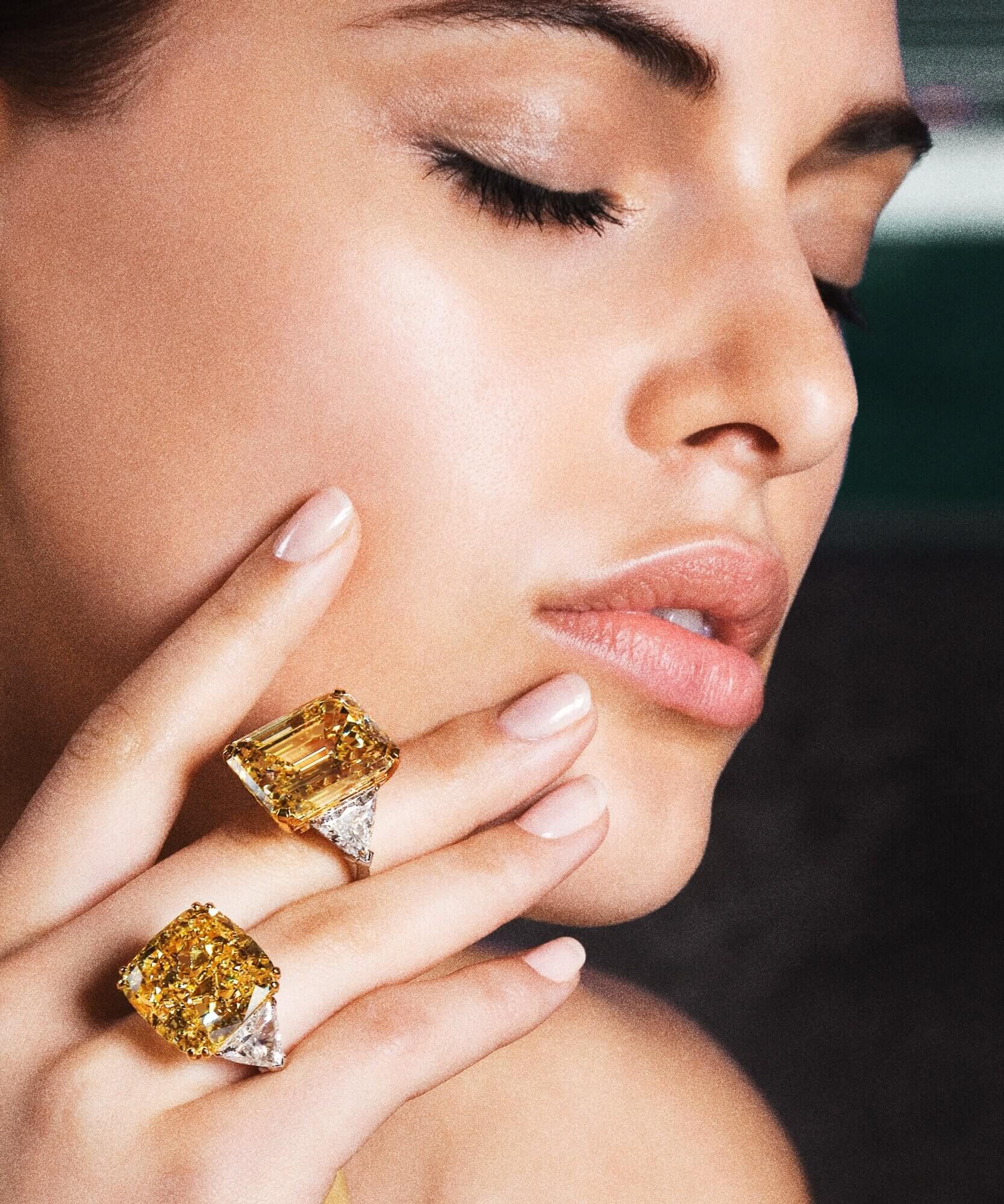
As the former Head of the Earth Sciences Collection at the Natural History Museum in London, and now CEO of the Gemmological Association of Great Britain, I see diamonds from a scientist’s perspective. But yellow diamonds hold a very special appeal.
At the British Museum there are drawers and drawers of white diamonds, but it is coloured diamonds that attract your attention. You just don’t see them that often, as only one in every 10,000 diamonds discovered displays colour.
While colourless diamonds are almost uniform, I am fascinated by the cause of the colour in diamonds, as each one has a unique history – whether it is the amount of boron present in blues, the structure of nitrogen in yellow diamonds, or the strain on the molecular lattice that gives pinks their rosy tones.
Each nuance of colour has its own story that began in the earth billions of years ago. From its primordial state to observing the light effects and final colour achieved by a master cutter, the journey of a polished coloured diamond is perhaps one of the longest and most wondrous of any object on earth.
The vast majority of diamonds, including yellows, were formed deep within the earth some three billion years ago, at depths usually greater than 140km. Here, in a part of the mantle that is relatively rigid, carbon is transformed under great temperature and pressure into a diamond.
However, with a yellow diamond, the key difference is the inclusion of the element nitrogen within its structure. This causes the diamond to absorb light in the blue region of the visible spectrum, resulting in the yellow colour that we see.
“A yellow diamond is a window into the workings of our planet.”
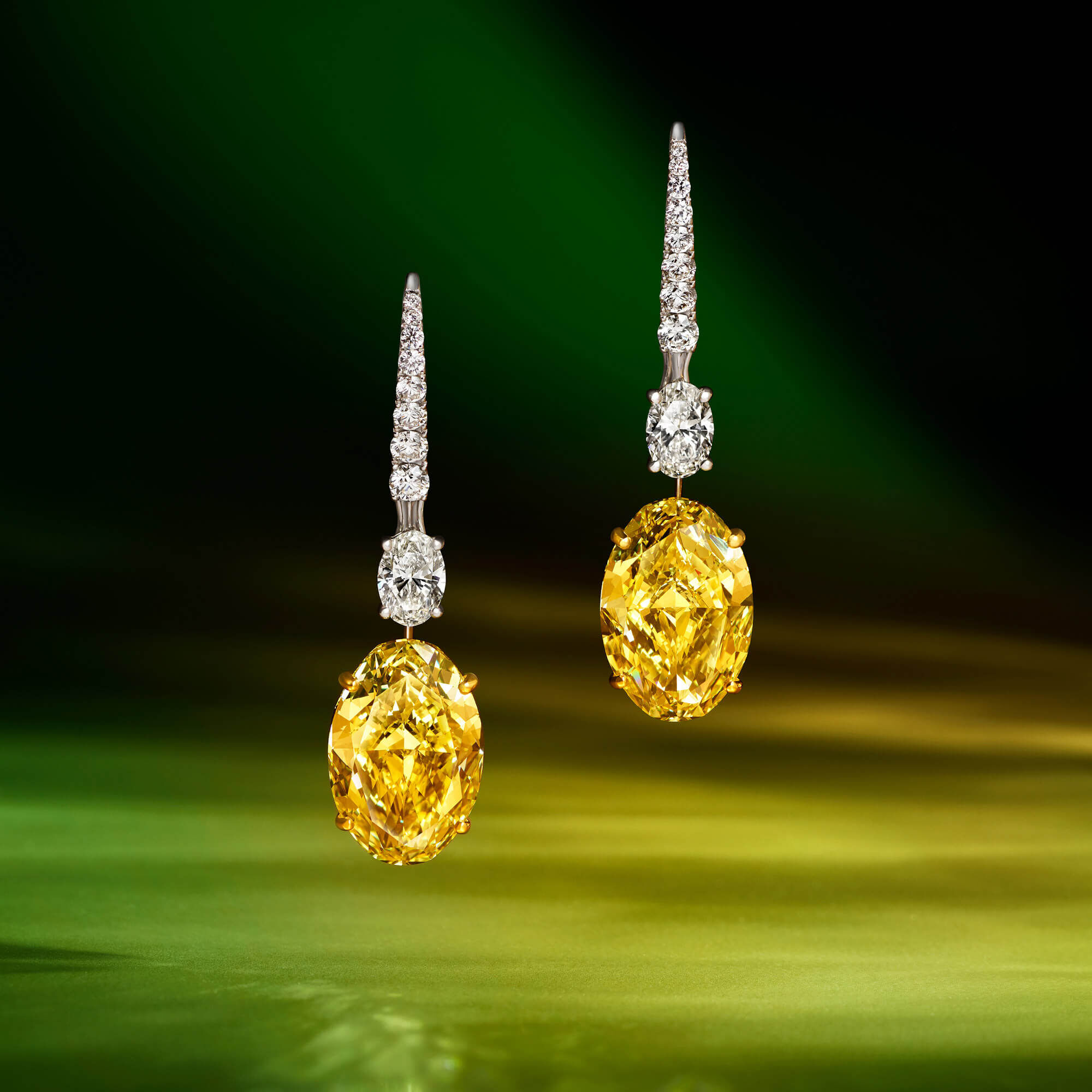
The Fancy Vivid grading for a yellow diamond is light to medium in tone. It should not be too dark and have a very high saturation or strength of colour.
In this category, the deep yellow colour is shown to its best effect, making it the most desirable colour grade. Although, beauty is in the eye of the beholder, and other grades and colours can be every bit as pleasing.
Beyond its attractiveness, a yellow diamond is a window into the workings of our planet. While a jeweller seeks out perfection, as a scientist I am interested in the imperfections.
Each trapped particle can tell us what minerals are forming deep within the planet that help to understand our earth, and even if there might be diamonds on other planets.
And, remember, as we live on a dynamic planet, beneath our very feet diamonds are still being formed that may see the light of day millions of years from now.
PHILIPPE FURCAGE
— The Diamond Cutter —
Master Cutter at Safdico
Polishing a yellow diamond is all about keeping the colour within the stone and bringing it from the bottom to the top of the diamond. The colour should reflect back from the uppermost facet and not shine through, which is the opposite of what a polisher aims for in a colourless diamond. It is a skill that only a master cutter with at least 10 years’ experience can attempt. You may have noticed that coloured diamonds often display a cut that is modified compared to their colourless counterparts, as again this helps hold the colour in the diamond. This is why most yellow diamonds are modified oval, cushion or pear cuts with the lower facets and corners angled, or modified to increase the intensity of the colour. For the same reason, you don’t often see a round brilliant cut yellow diamond with a deep culet, which would water down the colour.
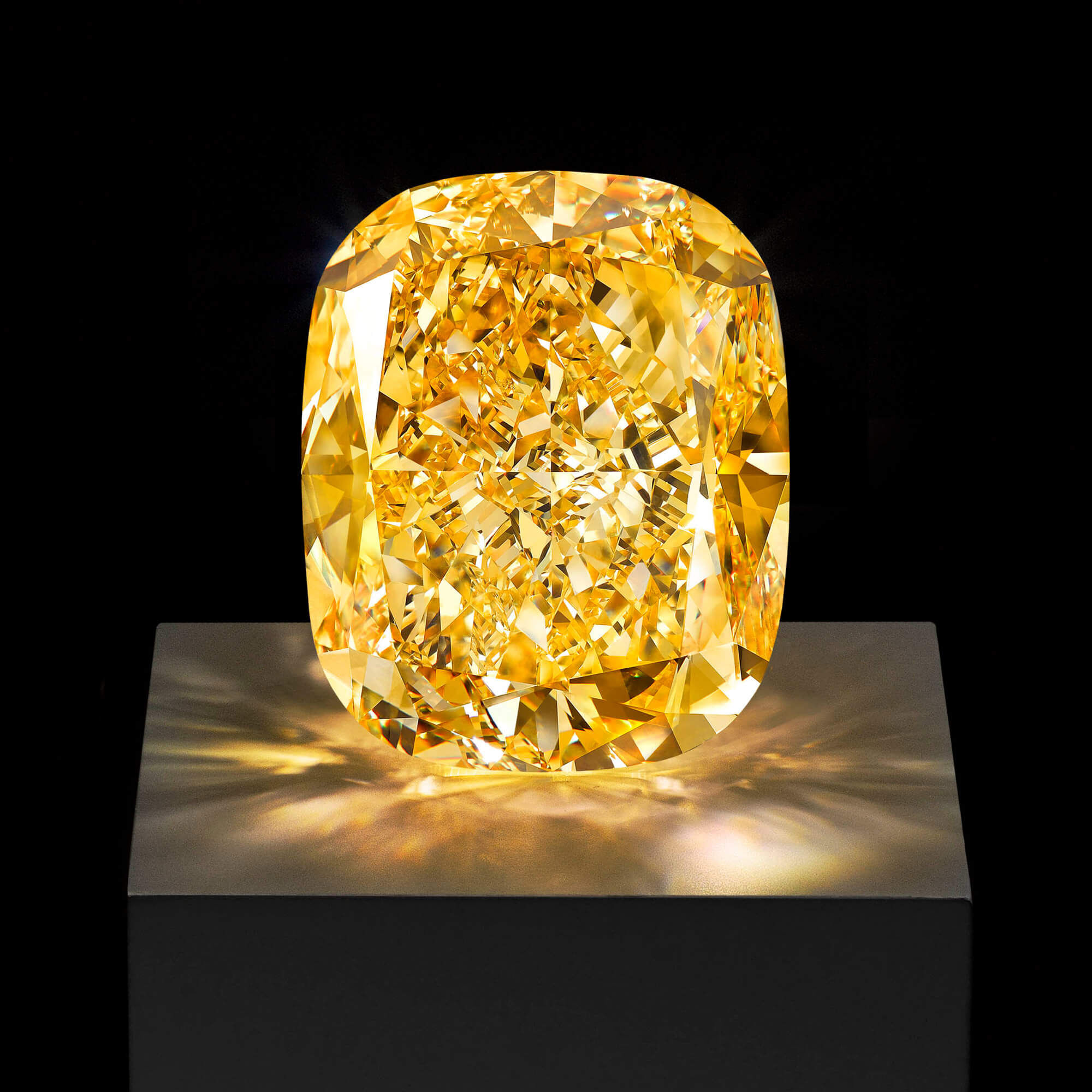
At the wheel, all we have is our eyes and some basic tools, and we really have to look for the colour. Each stone is different and a research project in its own right.
It takes about six weeks to polish a one carat yellow diamond within the overall three-month process. But a big diamond can take a year or more to polish.
We progress very slowly and gently, as yellow diamonds are more stressed than colourless diamonds due to their crystallisation process, which means they react differently at the wheel.
It is also important to take into consideration the provenance of a coloured rough diamond as geological differences affect the hue and intensity in different ways, and how the diamond reacts to the polishing process.
An experienced cutter can look at a rough diamond and evaluate what the final colour will be. This is down to experience, as often we are looking at diamonds at auction and are not able to make a window into the stone. But, even so, we can fairly accurately estimate the intensity and purity of colour.
Once a yellow diamond is in our possession, we aim to take the colour up a level, from say Fancy Intense to Fancy Vivid, but it is always a gamble and not an exact science. Within each colour grade there are many subtleties of shades and intensity, so it is about finding the most beautiful cut for each stone.
This is the old art of the polisher that only experience can teach.
ANNE-EVA GEFFROY
— The Designer —
Design Director at Graff
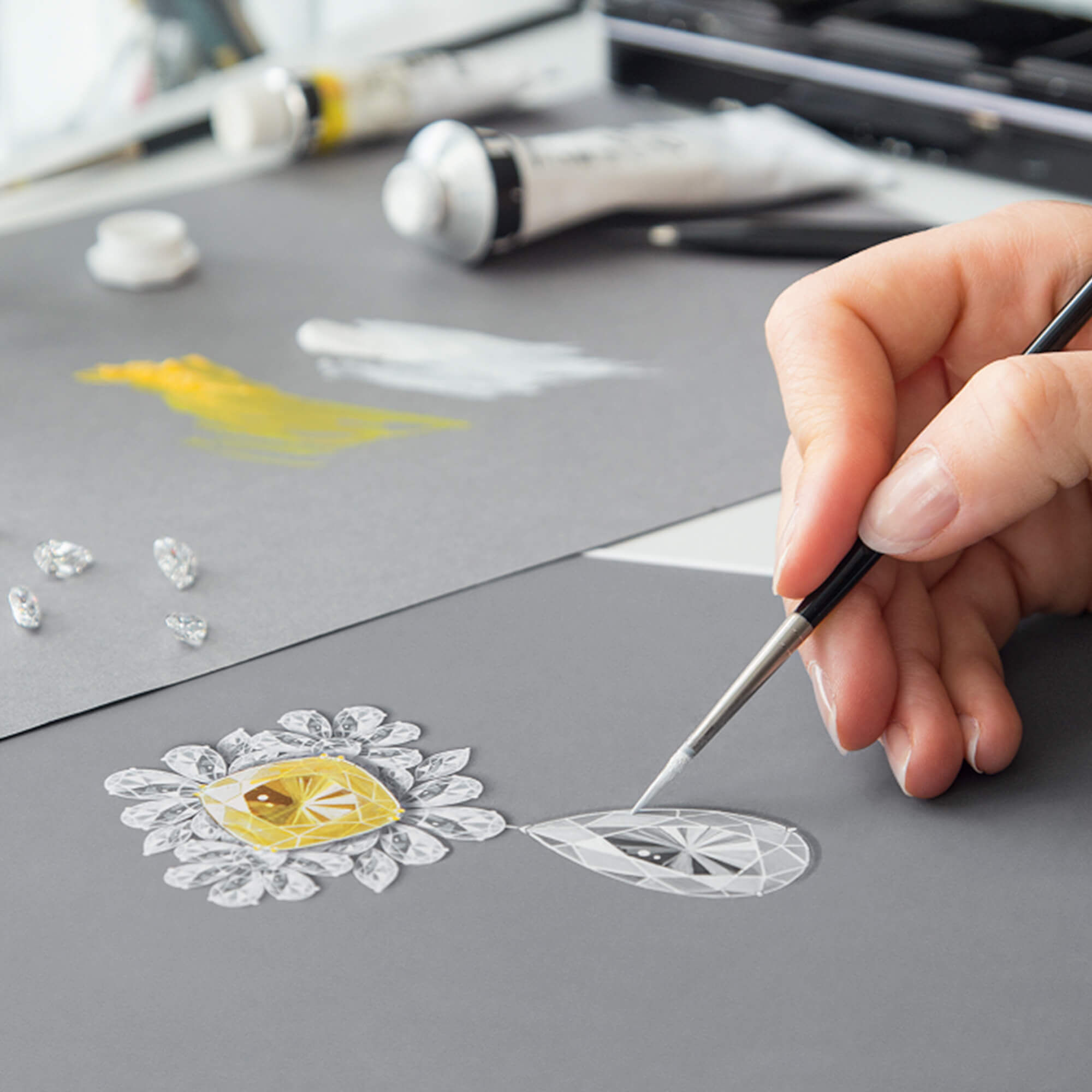
The range of yellow diamonds with which I work is exceptional in terms of colour, quality, cut and quantity. Few jewellers have the luxury of such a wide range of yellows at their fingertips, from the traditional colour gradings — Light to Vivid — but also exceptional examples of other colours such as Deep Orange Yellow and Brownish Yellow.
Because we have many valuable diamonds and also some of the rarest in the world, the design of a yellow diamond jewel is often based around the stone. I don’t dream up an idea and then look for the diamonds – I start with the stones. And in our atelier, diamonds, the epitome of femininity, are always referred to as ‘she’.
It is vital to know the stones intimately so I hold them in my hands every day. Our London studio faces north, which offers the perfect light for looking at diamonds. I spend a lot of time studying each one, even before my initial gouache drawings take shape.
With yellow diamonds in particular, I love making bracelets or watches that feature more than one stone. You don’t see this very often as other designers simply don’t have the yellow diamonds to choose from to create these magnificent combinations.
When you see a bracelet or earrings made from dozens of yellow diamonds, the colours are so vibrant that they look almost unreal. And there is a skill to combining them so that the Vivid diamonds, the brightest of them all, don’t steal the show.
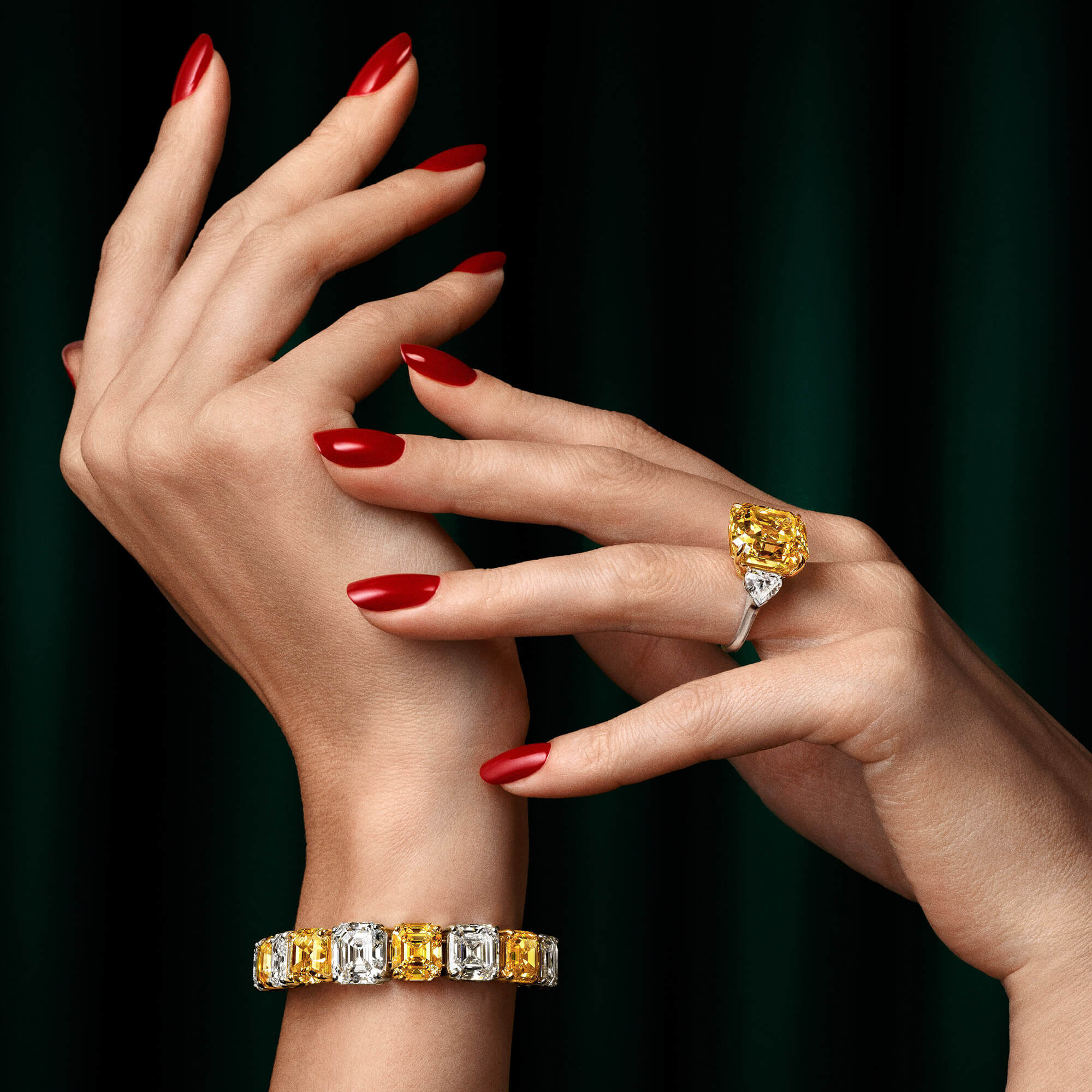
Unlike other jewellers, even after the gold frame of the jewel has been crafted downstairs in the workshop, it comes back to my team and we play with the angles and height of each stone to maximise the harmony and beauty until it is just right.
We have to be prepared to start from scratch if something is not perfect, as our aim is to create a balance in the architecture of each jewel, which has to be as natural as breathing.
We set yellow diamonds in yellow gold claws and baskets for the simple reason that it is less visible when looking into the stone, even if the rest of the jewel is in white gold.
Yellow diamonds combine best with white diamonds, particularly in necklaces or bracelets, as they make the colours more intense.
An exceptional yellow diamond, in my opinion, should be set into a ring. Whereas in a necklace you create a pattern that you fill with stones, a ring is the purest and most simple way to present a stone.
And don’t forget that on your hand you share your stone through your gestures, and with each movement you see the beauty of a yellow diamond from all sides.

